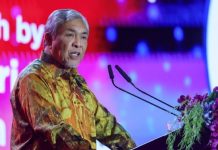The prolonged Covid-19 pandemic is clouding economic projections for Southeast Asia, with most countries not expected to return to pre-pandemic growth levels for several years.
The Philippines will see the largest decline in average annual gross domestic product growth in the three years ending 2022 — more than five percentage points — compared to 2019, the last full year before the outbreak, according to median estimates of economists surveyed by Bloomberg.
Major economies in Southeast Asia expect to grow this year and next, but more slowly than before the pandemic. New local outbreaks and tightened lockdowns have prompted economic downgrades, with most countries reporting their economies contracted in the first three months of the year.
Singapore is expected to be the lone country in the region to buck the trend, forecast to grow GDP by an average of 1.67% in 2020-2022, compared to 1.3% in 2019, amid a strong post-pandemic rebound in global trade, said Arjen van Dijkhuizen, senior economist at ABN Amro.

The return to normal of international tourism, expected in 2023, could be a key moment for Southeast Asia. Indonesia is expected grow above its long-term trend in 2023 — similar to Singapore and Thailand — after likely reaching herd immunity by the end of 2022, according to Mohamed Faiz Nagutha, an economist with Bank of America Securities in Singapore. Most countries in the region will return close to their long-term growth trends in 2023, he said.
Elsewhere in Asia, Hong Kong will see average annual growth of 1% during 2020-2022, compared to a contraction of 1.7% in 2019, when political protests rocked the island. The Chinese territory recently approved plans to ease some pandemic travel restrictions.
“We sense that Hong Kongers are increasing consumption on services, but remain unmotivated in purchasing non-essential goods,” Citigroup economist Adrienne Lui said. “We continue to believe that achieving herd immunity via vaccination is the key to genuine recovery in local consumption, reopening of the border and normalization of the economy.” – (Bloomberg)














